In general
Monitoring sites were installed in locations within the Athens Basin, according to the design described in the Objective section. For the characterization and the final selection of monitoring points, the macro- and micro-scale siting guidelines specified in the EU 2008/50/EC Directive were followed (e.g. site representativeness, distances from the ground, from obstacles to free air flow, from roads and point sources, etc.).
All medium- and low-cost systems are calibrated using reference instruments at the NOA-Thissio station, for a period of at least 3 weeks. During this time, collocated sensor-based systems and reference instruments operate concurrently at the same site, allowing for the evaluation of their covariance as well as for the calculation of model coefficients to adjust the levels from the sensor-based systems more accurately to those of the reference instrument
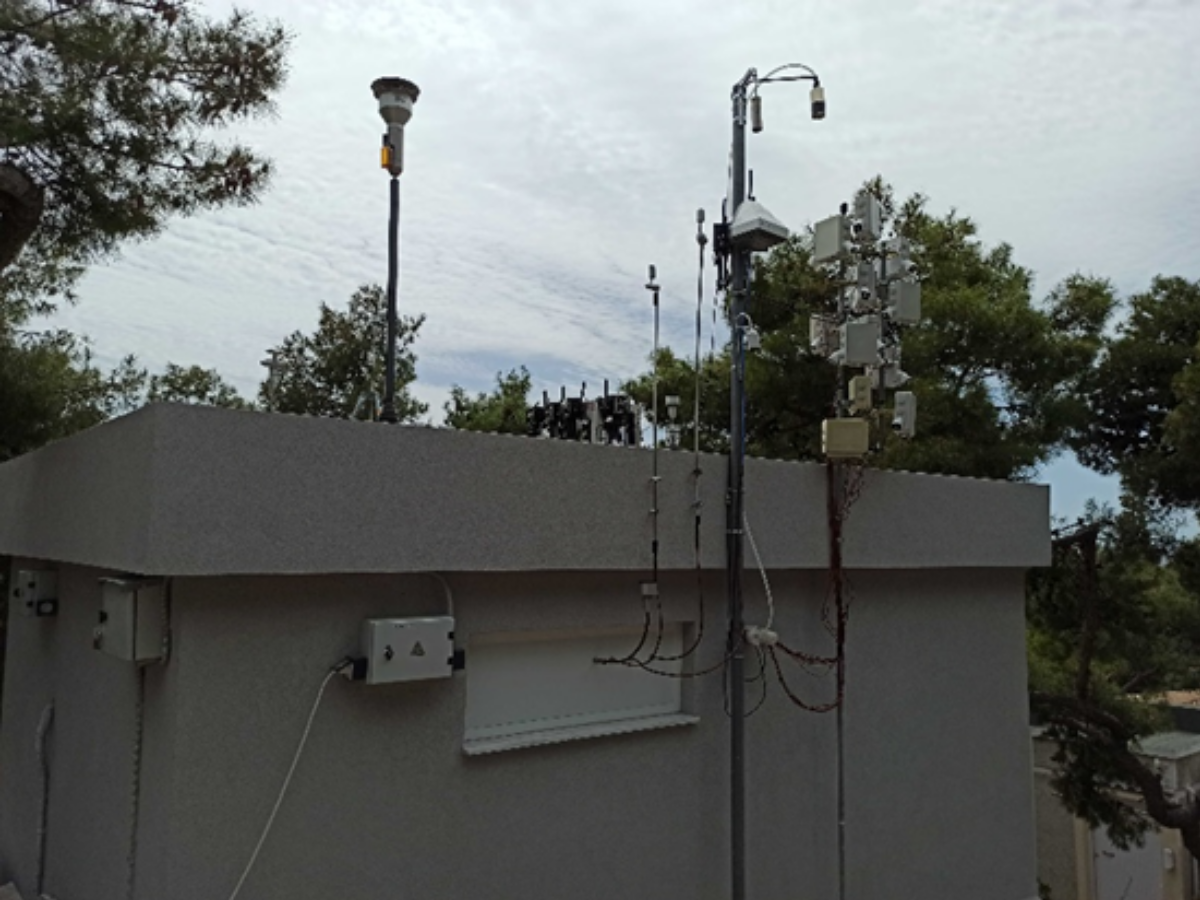 |
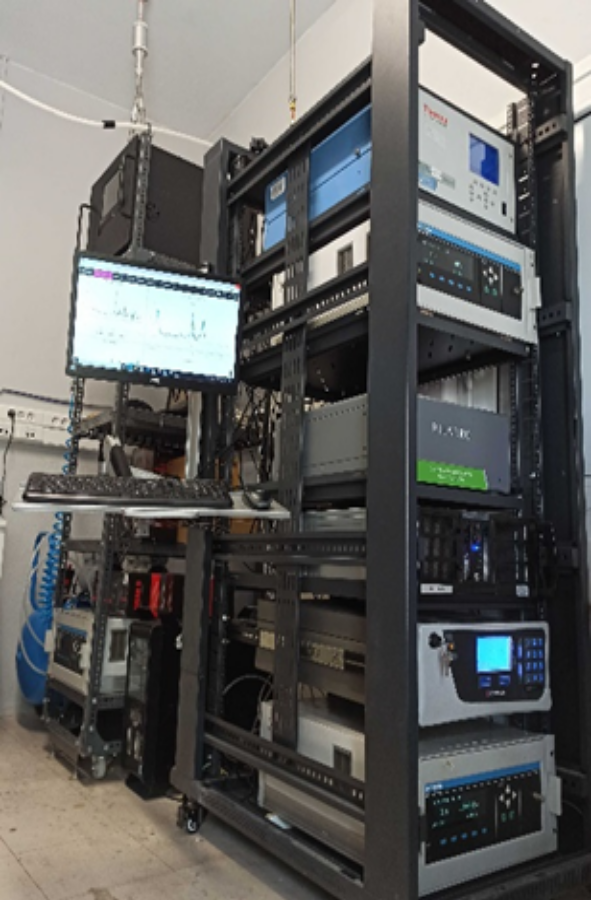 |
|
| NOA reference station at Thissio (external view and reference instruments inside the station) | ||
Medium-Cost Multi-Pollutant Monitoring System
In the framework of the EMISSION project, six AQMesh® systems that monitor multiple air pollutants were procured. The systems include Alphasense® electrochemical sensors for measurement of O3, NO2 and CO, as well as an optical sensor for measurement of particle number counts in multiple size ranges, a process that finally provides PM2.5 concentrations. Meteorological parameters (temperature, relative humidity, barometric pressure) are also recorded. The system uses the latest versions of AQMesh proprietary algorithms in order to process the signal of electrochemical and optical sensors to concentrations of the respective pollutants. It communicates via GSM/GPRS with the AQMesh data server, where the data is processed, stored and then transferred via API to the EMISSION server (data on a 15-minute basis). AQMesh systems have been installed in public buildings, in collaboration with the Region of Attica and Municipalities in the Athens Basin.
 |
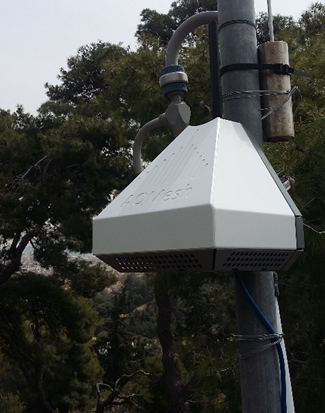 |
|
| AQMesh© medium-cost, sensor-based system for monitoring multiple air pollutants | ||
Low-Cost Multi-Pollutant Monitoring System
As part of the EMISSION project, an integrated low-cost air pollution monitoring system was developed, using sensor technology and IoT. The system includes Alphasense® electrochemical sensors for measurement of NO2 and O3, and the Plantower PMS5003 optical sensor for measurement of particle number counts in multiple size ranges providing PM2.5 concentrations. Meteorological parameters (temperature, relative humidity, barometric pressure) are recorded using a Bosch Sensortec BME280 sensor. The low-cost systems are driven by an STM32-Nucleo family microcontroller, ensuring low power consumption and high processing power. Τhe electrochemical gas sensors are connected in an analog way as the microcontroller offers a high sampling rate at its analog inputs. The optical particle sensor, the GPS positioning device, the internal SD memory card, the Wi-Fi wireless networking device and the modem for data transmission via GSM/GPRS mobile network are serially connected (RS-232), while the meteorological sensor communicates in serial I2C mode. Three categories of low cost stations were developed. The first uses Wi-Fi broadband network and mains electricity, the second uses mobile network and mains electricity, while the third uses mobile network and an autonomous power supply system (photovoltaic panel and battery). Each system is housed in an IP67 environmental enclosure. Sensor measurements are obtained every 10 seconds, and their average values are transmitted as json string to the EMISSION server every five minutes. The University of West Attica has constructed and programmed 20 low-cost systems: four (4) energy-autonomous, using GPRS mobile network, three (3) using Wi-Fi and thirteen (13) using GPRS mobile network. Systems are installed at sites in the Athens Basin, which include public buildings and private residences.
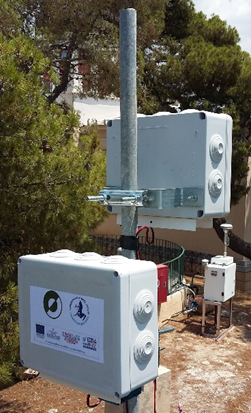 |
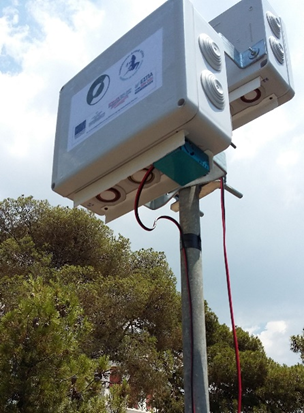 |
|
|
Low-cost, sensor-based system, developed in EMISSION for monitoring multiple air pollutants |
||
Black Carbon Monitoring System
Micro-aethalometers are used to determine atmospheric Black Carbon (BC) concentrations in multiple locations in the Athens basin. The aethalometer is an instrument that determines BC concentrations by recording the light-absorption caused by ambient particles collected on a filter tape. The Aethlabs microAeth® MA200, that is used in EMISSION, is a system that provides most of the features of a reference aethalometer, combining reliable monitoring with small size and relatively lower cost, also providing flexibility in its integration into IoT networks. The MA200 records light-absorption at 5 wavelengths, in the spectral range 375-880 nm, and through analysis of spectral absorption properties can provide information on the contribution of specific BC sources, such as fossil-fuel (e.g. diesel, gasoline) combustion and biomass burning (e.g. firewood).
Specifically, for EMISSION, AethLabs has developed a modified MA-200 firmware that allows intermittent operation without advancing the filter-tape, which permits more cost-effective alternatives for long-term monitoring. Comparisons between intermittent and continuous operation by NOA, using also an AE33 aethalometer as reference, showed very good agreement for hourly-averaged measurements.
For the operation of the instrument in EMISSION, the development of a suitable environmental enclosure (IP65) has been carried out by ENCO, which, in addition to housing the micro-aethalometer, includes a Raspberry Pi 3 Model B+ with a special driver developed for the software that controls the device, receives the measurements, connects via Wi-Fi to the internet and transmits the measurements to the EMISSION server (at a 1-min resolution).
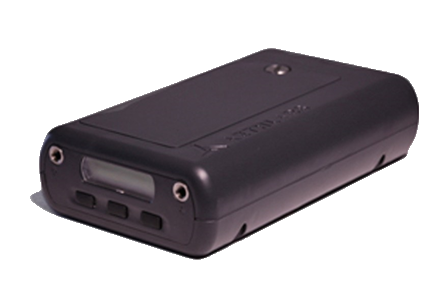 |
| microAeth© MA200 Black Carbon (BC) measurement system |




